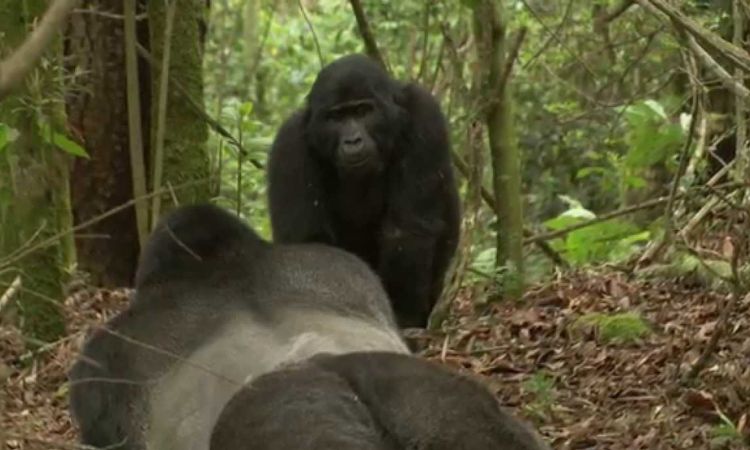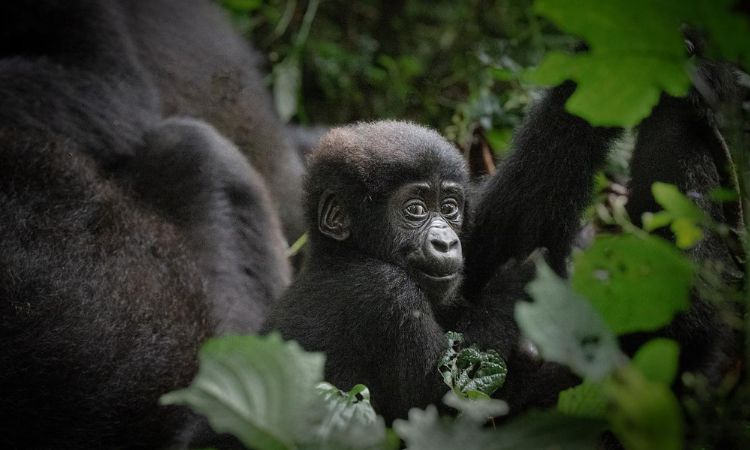How do female gorillas seduce males: A Fascinating Insight 2025
How do female gorillas seduce males: Female gorillas, like many primates, have evolved specific behaviors and strategies to attract and seduce male gorillas, particularly during their reproductive cycles.
These behaviors are shaped by their social structure, biology, and the dynamics of gorilla troops, which typically consist of a dominant male, the silverback gorilla, several females, and their offspring.
Understanding how female gorillas seduce males requires examining their reproductive biology, social interactions, behavioral cues, and the ecological context of their mating systems.
Gorilla Social Structure and Mating System
Gorillas live in cohesive social groups called troops or bands, led by a dominant silverback male who typically monopolizes mating opportunities with the females in the group.
The silverback’s role is to protect the group, mediate conflicts, and sire offspring. However, female gorillas are not passive in the mating process; they actively engage in behaviors to attract the silverback or, in some cases, extra-group males during dispersal or intergroup encounters.
Their strategies for seduction are subtle, strategic, and tied to their reproductive status, as well as the social dynamics of the troop.
Female gorillas are polygynous, meaning they typically mate with the dominant silverback, but they may also engage in extra-group copulations under certain conditions, such as when seeking to transfer to a new group.
Seduction in this context serves two primary purposes: ensuring reproductive success by attracting a strong mate and maintaining social bonds within the group to secure protection and resources.
Reproductive Biology and Estrus
Female gorillas reach sexual maturity around 7–10 years of age, with their first ovulation often occurring shortly after. They have a menstrual cycle lasting approximately 28–30 days, with a brief window of fertility (estrus) lasting about 1–3 days.
During estrus, females experience physiological changes, such as genital swelling, that signal their reproductive readiness to males.
However, unlike some other primates, such as baboons, gorilla genital swelling is less pronounced, so behavioral cues play a more significant role in seduction.
Estrus is the primary period when females actively initiate mating behaviors, but they may also engage in non-reproductive mating to strengthen social bonds or confuse paternity, reducing the risk of infanticide by males. The interplay of biology and behavior during estrus is critical to understanding how female gorillas seduce males.

How do female gorillas seduce males: Behavioral Strategies for Seduction
Female gorillas use a combination of physical displays, vocalizations, and social interactions to attract males. These behaviors are often subtle and context-dependent, reflecting the female’s reproductive status and the social dynamics of the troop. Below are the key strategies observed in female gorilla seduction:
Proceptive Behaviors
Proceptive behaviors are actions females take to initiate mating or signal sexual interest. During estrus, female gorillas often approach the silverback more frequently, staying in close proximity to him. This proximity increases the likelihood of mating and signals their readiness. Common proceptive behaviors include:
Following and Staring
Females may follow the silverback closely, maintaining eye contact or staring at him to capture his attention. Prolonged eye contact is a significant signal in gorilla communication, conveying interest and submission.
Body Posturing
Females may adopt specific postures, such as presenting their hindquarters, to indicate receptivity. This posture mimics the mating position and is a clear invitation for the male to engage.
Touching and Grooming
Females may touch the silverback gently or offer to groom him, which strengthens social bonds and signals affection. Grooming is a common affiliative behavior in gorilla groups and can serve as a precursor to mating.
Vocalizations
Gorillas use a range of vocalizations to communicate, and females may employ specific sounds to attract males. During estrus, females may produce soft grunts or whimpers when approaching the silverback, signaling their interest. These vocalizations are subtle and often directed specifically at the male, distinguishing them from general group communication.
Synchronized Movements
Females may mirror the silverback’s movements or position themselves in his line of sight during group activities, such as foraging or resting. This synchronization keeps the female in the male’s awareness and reinforces her availability.
Courtship Displays
While less elaborate than in some other primates, female gorillas may engage in subtle courtship displays, such as swaying or moving rhythmically near the male. These displays are often accompanied by glances or body orientation toward the silverback, reinforcing the female’s intent.
Non-Estrus Mating
Interestingly, female gorillas may engage in mating behaviors outside of estrus to maintain the silverback’s interest or to confuse paternity. By mating with the silverback at various times, females reduce the likelihood that a new male will commit infanticide if he takes over the group, as he may assume the offspring could be his. This strategy indirectly enhances the female’s reproductive success by protecting her young.

Social Dynamics and Competition
In multi-female gorilla troops, competition for the silverback’s attention can influence seduction strategies. Higher-ranking females may have more access to the silverback, but lower-ranking females can still employ seduction tactics to secure mating opportunities.
Subordinate females may use sneaky or opportunistic behaviors, such as approaching the silverback when dominant females are distracted or during group movements when monitoring is less intense.
Intergroup encounters also play a role in female seduction. When troops come into contact, females may transfer to a new group if they perceive the new silverback as stronger or more desirable.
During these encounters, females may display proceptive behaviors toward the rival silverback, such as approaching him or presenting, to initiate a transfer.
This behavior is risky, as it can provoke aggression from the current silverback, but it reflects the female’s agency in choosing a mate.
Ecological and Contextual Factors
The environment and group dynamics shape how female gorillas seduce males. For example:
- Food Availability: In times of abundant food, females may have more energy to engage in proceptive behaviors, as they are less focused on foraging.
- Group Size: In larger groups, females may need to compete more intensely for the silverback’s attention, leading to more pronounced seduction behaviors.
- Silverback’s Behavior: The silverback’s personality and dominance style can influence female strategies. A more attentive or aggressive silverback may require less overt seduction, while a less engaged male may prompt females to escalate their efforts.
Differences Between Gorilla Species
There are two species of gorillas—western gorillas (Gorilla gorilla) and eastern gorillas (Gorilla beringei)—with slight variations in social structure and mating behaviors. Western gorilla groups are often smaller and more fluid, with females having more opportunities to interact with multiple males during intergroup encounters.
Eastern gorillas, including mountain gorillas, typically live in more stable groups with a single dominant silverback, so female seduction is more focused on maintaining the silverback’s favor.
However, the core seduction strategies—proceptive behaviors, proximity, and vocalizations—are consistent across both species.
Evolutionary Significance
Female gorilla seduction behaviors have evolved to maximize reproductive success and offspring survival. By attracting a strong silverback, females ensure their offspring inherit robust genes and receive protection from predators and rival males.
Seduction also reinforces social bonds, which are critical in gorilla societies where group cohesion enhances survival. The use of non-reproductive mating to confuse paternity further highlights the strategic nature of female gorilla behavior, as it mitigates risks like infanticide.
Comparison with Other Primates
Compared to other primates, such as chimpanzees or baboons, gorilla seduction is less visually dramatic. Chimpanzees, for example, exhibit exaggerated genital swellings and engage in promiscuous mating, while gorilla females rely on subtler cues due to their more stable group structure.
This difference reflects the gorilla’s polygynous system, where the silverback’s dominance reduces the need for overt female competition compared to multi-male primate groups.
Do female gorillas enjoy sex?
Female gorillas may experience pleasure during mating, as evidenced by proceptive behaviors and vocalizations during estrus.
However, their primary motivation is reproductive success and social bonding, not necessarily pleasure. Exact enjoyment is hard to quantify.
What is the most preferred female gorilla mating position?
The most common mating position for female gorillas is dorsoventral, where the female presents her hindquarters, crouching or standing, while the male mounts from behind. This position facilitates copulation and is widely observed in gorilla mating.
Do gorillas mate with their offspring?
Gorillas generally avoid mating with their offspring due to dispersal patterns, where young females leave the natal group. Inbreeding is rare, but in small groups, it can occur if daughters remain with the silverback father.



